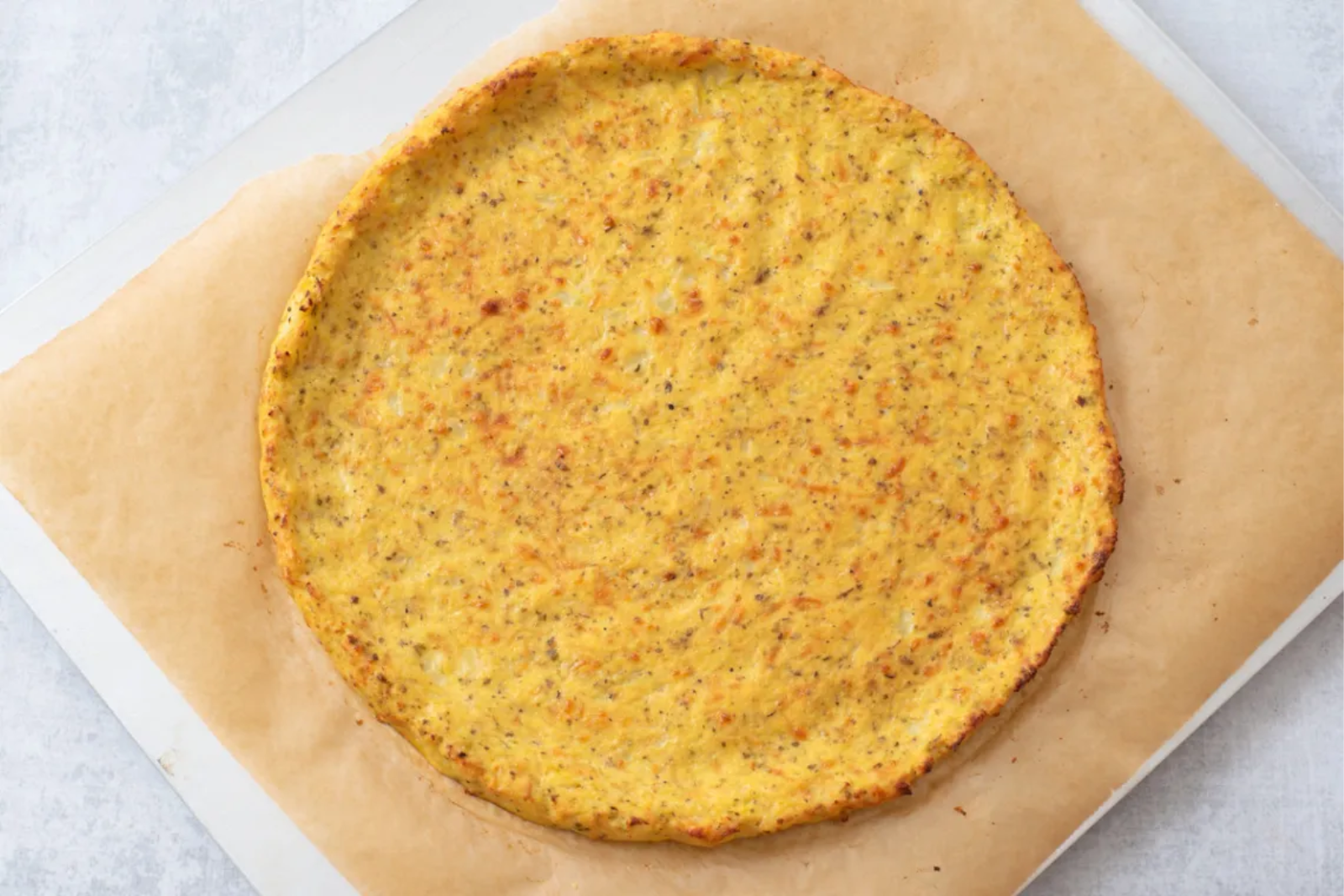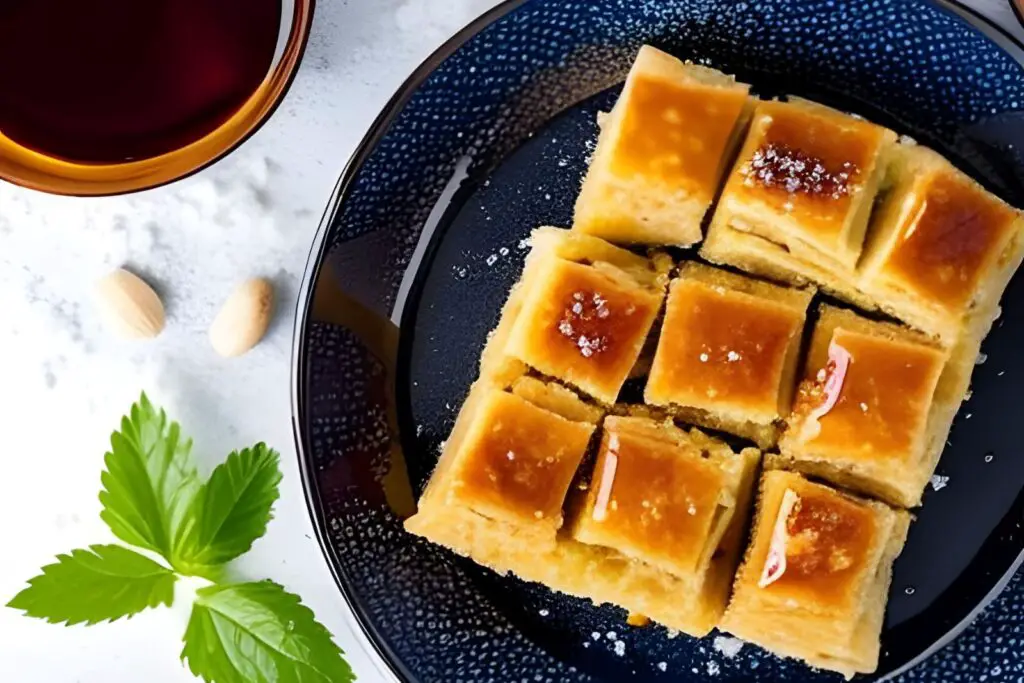
Introducing cauliflower pizza crust, a delicious and healthier alternative to traditional pizza crusts. Made primarily from cauliflower, this gluten-free and low-carb crust has gained popularity among those seeking a lighter and more nutritious pizza option. With its crispy texture and neutral flavor, cauliflower pizza crust provides a versatile base for a variety of toppings, allowing you to customize your pizza to suit your taste buds. But what if you have leftover cauliflower pizza crust or want to make a batch in advance? Freezing cauliflower pizza crust is a convenient solution to ensure you always have a ready-to-go crust on hand whenever pizza cravings strike. By freezing the crust, you can maintain its quality and freshness for future use, making it a convenient and time-saving option for busy days or impromptu pizza nights. Join us as we explore the world of cauliflower pizza crust and discover the best methods for freezing and storing this delicious and nutritious alternative.
Here are the simple steps to freeze cauliflower pizza crust:
Step 1: Prepare the cauliflower Pizza Crust
When it comes to freezing cauliflower pizza crust, it is crucial to begin with a fully cooked and cooled crust. Whether you have made the crust from scratch using fresh cauliflower or bought it pre-made from a store, ensuring that it is properly prepared before freezing is essential for maintaining its quality.
If you are making the cauliflower pizza crust from scratch, follow the recipe or instructions carefully to achieve the desired texture and taste. Typically, this involves grating or processing the cauliflower into rice-like pieces, cooking it, and then combining it with other ingredients such as eggs, cheese, and seasonings. The mixture is then shaped into a crust and baked until golden and firm.
If you have purchased pre-made cauliflower pizza crust, follow the instructions provided by the manufacturer to cook it properly. This may involve preheating the oven, placing the crust on a baking sheet or pizza stone, and baking it for a specific duration at a recommended temperature.
In both cases, it is important to allow the cauliflower pizza crust to cool completely before moving on to the freezing process. Cooling helps prevent condensation from forming inside the packaging, which can lead to ice crystals and affect the crust’s texture when thawed.
Step 2: Wrap the Cauliflower Pizza Crust
To preserve the quality of the cauliflower pizza crust and prevent freezer burn, it is important to properly wrap it before placing it in the freezer. Freezer burn occurs when moisture in the food evaporates, leading to the formation of ice crystals on the surface, resulting in dry and unappealing textures.
To begin, take a sheet of plastic wrap or cling film that is larger than the size of the cauliflower pizza crust. Place the crust in the center of the plastic wrap, ensuring that it is fully covered. The plastic wrap acts as a barrier, preventing air from coming into contact with the crust and reducing the risk of freezer burn.
Carefully wrap the plastic wrap around the crust, making sure to cover it tightly and secure the edges. Pay attention to any exposed areas and ensure they are fully covered to maintain the crust’s freshness. By tightly wrapping the cauliflower pizza crust, you create a protective layer that helps retain its moisture and texture during freezing.
If you prefer an additional layer of protection, you can also place the wrapped cauliflower pizza crust inside a freezer-safe resealable bag or an airtight container. This further minimizes air exposure and helps maintain the crust’s quality.
Properly wrapping the cauliflower pizza crust with plastic wrap is an effective way to safeguard it from freezer burn and maintain its freshness. Taking the time to wrap it tightly and cover the entire surface ensures that the crust retains its taste and texture when you’re ready to thaw and enjoy it later.
Step 3: Place the Wrapped Crust in a Freezer Bag
Once you have tightly wrapped the cauliflower pizza crust in plastic wrap to protect it from freezer burn, the next step is to transfer it to a freezer bag. Using a freezer bag provides an extra layer of insulation and helps maintain the quality of the crust during freezing.
Start by selecting a sturdy and appropriately sized freezer bag that can accommodate the wrapped crust without any difficulty. It is recommended to use a freezer-specific bag as it is designed to withstand low temperatures and provide better protection against freezer burn.
Carefully place the wrapped cauliflower pizza crust inside the freezer bag, making sure it fits comfortably without being squished or bent. The bag should be large enough to hold the crust with some extra space to allow for expansion during freezing.
Before sealing the bag, squeeze out as much excess air as possible. Removing excess air helps minimize the risk of freezer burn by reducing the amount of moisture that can come into contact with the crust. To do this, gently press the bag with your hands, starting from the bottom and moving upwards, pushing out the air through the opening.
Once you have removed the excess air, seal the freezer bag tightly to create an airtight seal. Ensure that the bag is securely closed to prevent any air or moisture from entering and affecting the quality of the cauliflower pizza crust.
Step 4: Label the Freezer Bag
Labeling the freezer bag that contains the cauliflower pizza crust with the current date is an important step in maintaining organization and ensuring that you use the crust within an appropriate time frame. By clearly marking the date, you can keep track of how long the crust has been frozen and prioritize its consumption based on freshness.
To label the freezer bag, use a permanent marker or a label sticker and write the date of freezing on a visible area of the bag. Include the month, day, and year to provide specific information about when the cauliflower pizza crust was frozen.
By labeling the bag, you create a reference point for future use. This is especially useful when you have multiple items in the freezer or if you plan on freezing additional cauliflower pizza crust in the future. It helps you avoid confusion and allows you to easily identify the crust you want to use based on its freezing date.
Additionally, it is important to adhere to recommended storage times for frozen foods. While cauliflower pizza crust can generally be stored in the freezer for several months, it is best to consume it within a reasonable time frame to maintain optimal quality and taste. By labeling the bag with the freezing date, you can keep track of how long the crust has been frozen and prioritize its use accordingly.
Step 5: Freeze the Cauliflower Pizza Crust
After properly labeling the freezer bag containing the cauliflower pizza crust, it’s time to place it in the freezer for the freezing process. This step ensures that the crust is preserved at the appropriate temperature and maintains its shape and quality.
When selecting a spot in your freezer to store the cauliflower pizza crust, aim for the coldest part of the freezer. Typically, this is the back or bottom shelf, as it tends to have a more stable and colder temperature. Avoid placing the bag near the freezer door or in areas that may be exposed to temperature fluctuations, as this can affect the quality of the crust.
Ensure that there are no items or other frozen foods pushing against the cauliflower pizza crust in the bag. This is important to maintain the crust’s shape and prevent any deformation or damage during freezing. The crust should lie flat and undisturbed in the bag to retain its integrity.
It is recommended to maintain a consistent temperature of 0°F (-18°C) or below in the freezer to keep the cauliflower pizza crust properly frozen. This temperature prevents bacterial growth and helps preserve the texture, taste, and overall quality of the crust.
How long can cauliflower pizza crust last in the freezer?
Cauliflower pizza crust can last in the freezer for up to 2 to 3 months when stored properly. The crust should be tightly wrapped in plastic wrap, placed in a freezer bag, and stored in the coldest part of the freezer to maintain its quality. It is recommended to consume the crust within this time frame for the best taste and texture.
Step 6: Thaw and Reheat
When the time comes to enjoy the frozen cauliflower pizza crust, it’s important to thaw it properly to ensure even cooking and a desirable texture. Follow these steps for thawing and reheating the cauliflower pizza crust:
- Remove the frozen cauliflower pizza crust from the freezer. Retrieve the labeled freezer bag containing the crust.
- Place the frozen cauliflower pizza crust in the refrigerator. Transfer it from the freezer bag to a plate or baking sheet and allow it to thaw overnight. Thawing in the refrigerator ensures a gradual thawing process, which helps maintain the crust’s quality and minimizes the risk of bacterial growth.
- Once the cauliflower pizza crust is fully thawed, preheat your oven to the recommended temperature specified in the original cooking instructions.
- Prepare the crust for baking. If needed, transfer the crust to a pizza stone, baking sheet, or pizza pan. Follow the original cooking instructions for the best results.
- Bake the cauliflower pizza crust according to the original cooking instructions. Typically, this involves baking for a specific duration at a certain temperature until the crust is golden and crisp.
- Keep an eye on the crust while it bakes to ensure it reaches the desired level of doneness. Cooking times may vary depending on the thickness of the crust and the specific recipe or brand.
- Once the cauliflower pizza crust is baked to perfection, remove it from the oven and allow it to cool slightly before adding your preferred toppings.
Thawing the frozen cauliflower pizza crust in the refrigerator overnight allows for a controlled thawing process that maintains the crust’s texture and taste. Baking it in the oven according to the original cooking instructions ensures that you achieve a delicious and crispy crust that is ready to be topped and enjoyed.
Other related questions
Can you refreeze cauliflower pizza crust ?
It is generally not recommended to refreeze cauliflower pizza crust after it has been thawed. Each cycle of freezing and thawing can affect the texture and quality of the crust. To maintain the best taste and texture, it is advised to only thaw the desired amount of crust needed for consumption and store any remaining portions in the freezer.
How do I know if the cauliflower pizza crust has gone bad after being frozen?
To determine if a cauliflower pizza crust has gone bad after being frozen, examine its appearance, texture, and smell. If the crust shows signs of freezer burn, such as discoloration, dryness, or the presence of ice crystals, it may indicate deterioration. Additionally, if the crust has an off-putting odor or a sour smell, it is likely spoiled. When in doubt, it is safest to discard the cauliflower pizza crust to avoid any potential health risks.
Can I freeze cauliflower pizza crust with toppings already on it?
It is generally not recommended to freeze cauliflower pizza crust with toppings already on it. Freezing toppings such as cheese, vegetables, or meats can affect their texture and quality, resulting in an undesirable thawed and reheated pizza. To maintain the best taste and texture, it is advisable to freeze the cauliflower pizza crust without toppings. You can freeze the crust separately and add the desired toppings fresh when you are ready to bake and consume the pizza.
Can cauliflower pizza crust be frozen with different types of flour or alternative ingredients?
Cauliflower pizza crust can be frozen with different types of flour or alternative ingredients, but it’s important to consider their compatibility and potential impact on texture and taste. Some alternative flours, such as almond flour or coconut flour, can be used in combination with cauliflower for the crust. However, keep in mind that different flours may result in variations in texture and taste when frozen. It’s recommended to follow specific recipes and guidelines for freezing cauliflower pizza crust with alternative ingredients for the best results.








